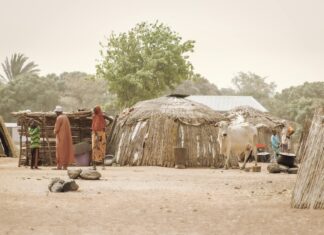When the coronavirus first stepped foot in India on January 30, calamity was envisaged. Being the world’s second most crammed nation after China, a baptism of fire wasn’t ruled out. However, like the cliche, ‘strength in numbers’, the south Asians are hoping to shock the odds with the help of its populace.
India and China share a lot in common; population size, technological advancement and most recently coronavirus history. Like the Chinese, India’s index case was from Wuhan; a student who had just returned home to Kerala’s Thrissur for a vacation from the National University.
Prime Minister Narendra Modi was slow to respond. In two days, infections spread to two other persons. By the start of March, figures became alarming. Yet the nation’s hot spots were brimming, almost every night, packed with cricket teams, joggers, school children, and elderly walkers—along with an entire informal economy of street vendors and fully-parked slums.
All vanished after Modi announced the world’s largest lockdown on 24 March, asking 1.3 billion Indians to stay home for 21 days. The Prime Minister sluggish directive was necessitated by mounting casualties in countries with vastly superior healthcare and apocalyptic projections.
Fewer than 600 cases had been confirmed at the time, although that number is widely believed to be an undercount. But without control measures, 300 million to 500 million Indians could be infected by the end of July and 30 million to 50 million could have severe disease, according to one model.
Modi’s lockdown had social and economic impacts even sharper than in richer countries. Millions of Indians who depend on each day’s wages for their daily meal were thrown out of work. Migrant workers packed buses and trains home, potentially taking the virus into rural areas.
Yet at the end of the lockdown, the numbers surged, begging for even more stringent measures. There was the other economic mishap. Modi had to sort a balance un order to keep the economic engine chugging again and lessen the pain of millions affected.
On Wednesday, the Prime Minister announced an extension by 19 days to May 3. This came with new rules and guidelines that have to be followed by the public, offices, industries and other establishments. Most notably in public places, people have been banned from spitting. They are also forbidden from selling cigarettes and liquor.
Here is the list of activities allowed and those barred during India’s lockdown 2.0:
All agricultural & horticultural activities to remain fully functional, such as – Shops of agriculture machinery, its spare parts (including its supply chain) and repairs to remain open. Movement (inter and intrastate) of harvesting & sowing related machines to remain operational.
Manufacturing, industrial establishments with access control will be allowed in SEZs, EoUs, industrial estates and industrial townships after implementation of SOP for social distancing. Manufacture of IT hardware and of essential goods and packaging can start.
All religious places shall be closed for public, religious congregations are strictly prohibited until May 3. In the case of funerals, a congregation of more than 20 persons will not be permitted for the period.
All educational, training institution etc shall remain closed, taxis (including auto and cycle rickshaws) & services of cab aggregators to remain prohibited until May 3.
Cinema halls, malls, shopping/sports complexes, gyms, swimming pools, theatres, bars etc to remain closed till May 3. All domestic & international air travel of passengers (except for security purposes), passenger movement by trains (except for security purposes), buses for public transport, metro rail services too will remain prohibited until them.
Bank branches and ATMs, IT vendors for banking operations, banking correspondents, ATM operation and cash management agencies to remain functional.
MNREGA works can begin from April 20 with strict implementation of norms such as social distancing and face mask.
Coal, mineral and oil production will be allowed.
The RBI, capital and debt markets as notified by SEBI and insurance companies will also remain functional, to provide liquidity and credit support to the industrial sectors.
The supply of milk, milk products, poultry and livestock farming and tea, coffee and rubber plantations can start from April 20.
Central and state government offices, along with local bodies will remain open with the required strength.
Spitting in public has been made a punishable offence and a strict ban enforced on sale of liquor, gutka, tobacco etc.
Highway ‘Dhaba’, truck repair shops, call centres for govt activities to remain open from April 20: Shops of agriculture machinery, its spare parts, its supply chain, repairs, ‘Custom Hiring Centres, related to farm machinery to remain open from April 20.
Manufacturing units of drugs, pharmaceuticals, medical devices, construction of medical infrastructure including the manufacture of ambulances to remain open from April 20.

The central government has made wearing of mask compulsory in public places across the country.
From April 20 activities permitted include agricultural, horticultural activities, farmers and farmworkers in the field, procurement of Agri products, ‘Mandis’.
Grocery stores, fruits, vegetables shops/ carts, milk booths, poultry, meat and fish shop to remain open during the lockdown.
Services provided by self-employed electrician, IT repairs, plumbers, motor mechanics, carpenters to allowed from April 20.
However, the exemptions given from April 20 will not be applicable in COVID-19 hotspots/ containment zones and the State/ UT governments shall not dilute guidelines in any manner but may impose stricter measures as per local requirements.
The home ministry said permitted industries must make arrangements for the stay of workers within their premises or adjacent buildings by observing social distancing norms.
The home ministry said defence, paramilitary, health and family welfare, disaster management, NIC, FCI, NCC, Nehru Yuva Kendra and Customs offices will function without any restriction.
Other ministries and departments are to function with “100 per cent attendance” with deputy secretary and above rank officers.
“Remaining officers and staff to attend up to 33 per cent as per requirement,” it said.










As at Saturday morning, India has over 14,000 cases and about 500 deaths.










